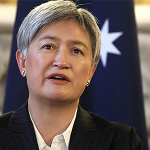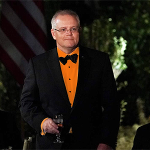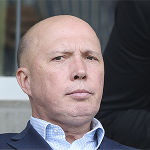“Shooting was ‘assassination attempt’ on Trump, says FBI,” The Star, July 14, 2024. [YouTube Video](https://www.youtube.com/watch?v=SVSd0i3kvrI).
The attempted assassination of former President Donald Trump in Butler, Pennsylvania, on Saturday has led to widespread criticism of the Secret Service, which is tasked with protecting current and former U.S. presidents and presidential candidates. Observers have pointed out glaring errors in the protection of President Trump. The fact that he was so shot by a sniper from a distance of only 130 meters, from an easily visible and obvious position, highlights significant security failures. Mainstream media outlets are conducting interviews and publishing analyses of the various failures of the Secret Service in this incident. This article amalgamates the numerous failures outlined by experts and reported by multiple media sources.
Rooftop Security Lapses
A significant failure was the shooter’s ability to access the rooftop of the American Glass Research building, just 130 meters (140 yards) from where Trump was speaking. The U.S. Army’s primary manual on physical and executive security, FM 3-19.30 (formerly FM 19-30), outlines critical steps that were overlooked in this case. These include conducting a thorough tactical analysis to identify strategic points and potential threat areas, and performing detailed reconnaissance to gather real-time information through site surveys and intelligence resources. Ignoring these essential procedures likely contributed to the security breach that allowed the shooter to position himself with a clear line of sight to the former president. Furthermore, despite the presence of Secret Service counter-sniper teams, the shooter managed to open fire before being neutralized. This shows a major lapse in the advance security sweeps and the failure to eliminate sight lines to the stage.
Ignored Warnings and Poor Response
Eyewitness accounts reveal that police ignored public warnings about the gunman. A witness reported seeing the shooter with a rifle on the rooftop and raised the alarm. However, these warnings were not acted upon, indicating a breakdown in communication and response protocols. Additionally, footage obtained by TMZ shows the gunman lining up his shot, highlighting missed opportunities to detect and intervene before the attack.
Coordination and Communication Failures
The Secret Service’s reliance on local police to fill out their protective units, including counter-assault and counter-sniper teams, may have contributed to the failure. Former Secret Service agents and experts stressed the importance of clear communication and coordination with local law enforcement. This reliance, coupled with a failure to adequately brief and prepare local officers, left critical gaps in the security plan. According to the Associated Press, “A local law enforcement officer climbed to the roof and found Crooks, who pointed the rifle at the officer. The officer retreated down the ladder, and the gunman quickly fired toward Trump.”
Lack of Resource Allocation
Questions have also been raised about whether the Secret Service devoted enough resources to protect Trump, especially given his status as the presumptive Republican presidential nominee. The agency has been under intense pressure due to staffing shortages and repeated security lapses, which may have impacted its ability to provide comprehensive protection. Secret Service Director Kimberly Cheatle was in Milwaukee at the time, preparing for the Republican National Convention, which may have led to a gap in leadership presence during the rally.
Additional Failures and Issues
Further compounding these issues, the shooter had explosive material in his car and residence, highlighting a significant oversight in threat assessment and security checks around the event. This raises serious concerns about the thoroughness of the security measures implemented and the ability to identify and neutralize potential threats before they escalate.
As the investigation by the FBI, Secret Service, and the Department of Homeland Security continues, there is a clear need for accountability and reform. This incident has prompted calls for an intensive review and realignment of security strategies to prevent similar occurrences in the future. Former Secret Service agent Joseph LaSorsa emphasized that this type of failure “cannot happen” and that substantial changes in the agency’s approach are inevitable.
As the investigation by the FBI, Secret Service, and the Department of Homeland Security continues, there is a clear need for accountability and reform. The incident has prompted calls for an intensive review and realignment of security strategies to prevent such occurrences in the future. Former Secret Service agent Joseph LaSorsa told the BBC that this type of failure shouldn’t happen and that there will be substantial changes in the agency’s approach.
The attack has also sparked discussions about increasing Trump’s security detail to a level comparable to that of a sitting president. As Trump is set to be officially nominated as the presidential candidate at the upcoming Republican National Convention, it is likely that security measures will be heightened significantly.
In conclusion, the attempted assassination of Donald Trump has exposed significant vulnerabilities in the Secret Service’s protective measures. This incident also raises an intriguing question: why have three out of four successful presidential assassinations targeted Republicans? While it’s essential to avoid fueling conspiracy theories, this situation prompts a critical examination of whether the lapses in Trump’s security reflect broader systemic issues within the Secret Service or if they were specific to protecting a presidential candidate who is both despised and vilified by the current administration and its followers.
The post Analysis of Secret Service Failures in the Trump Assassination Attempt appeared first on The Gateway Pundit.








